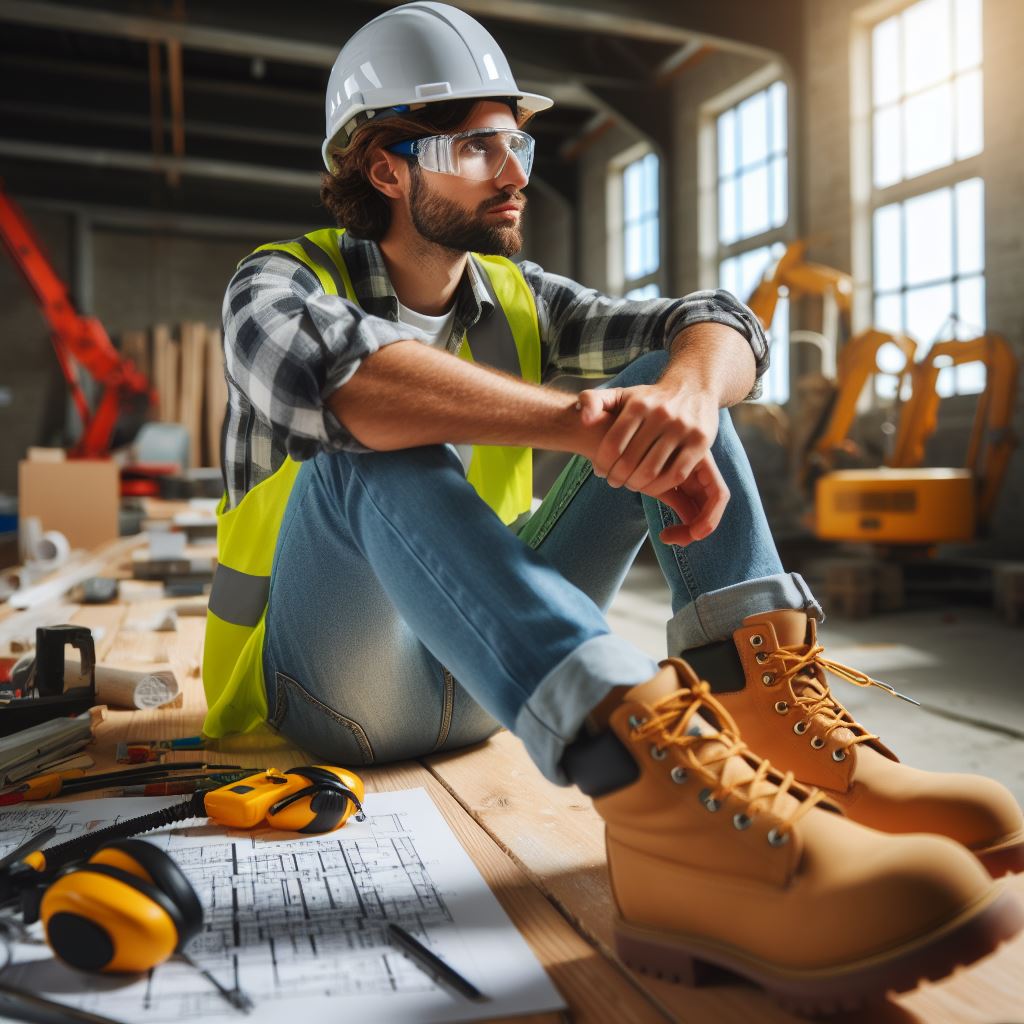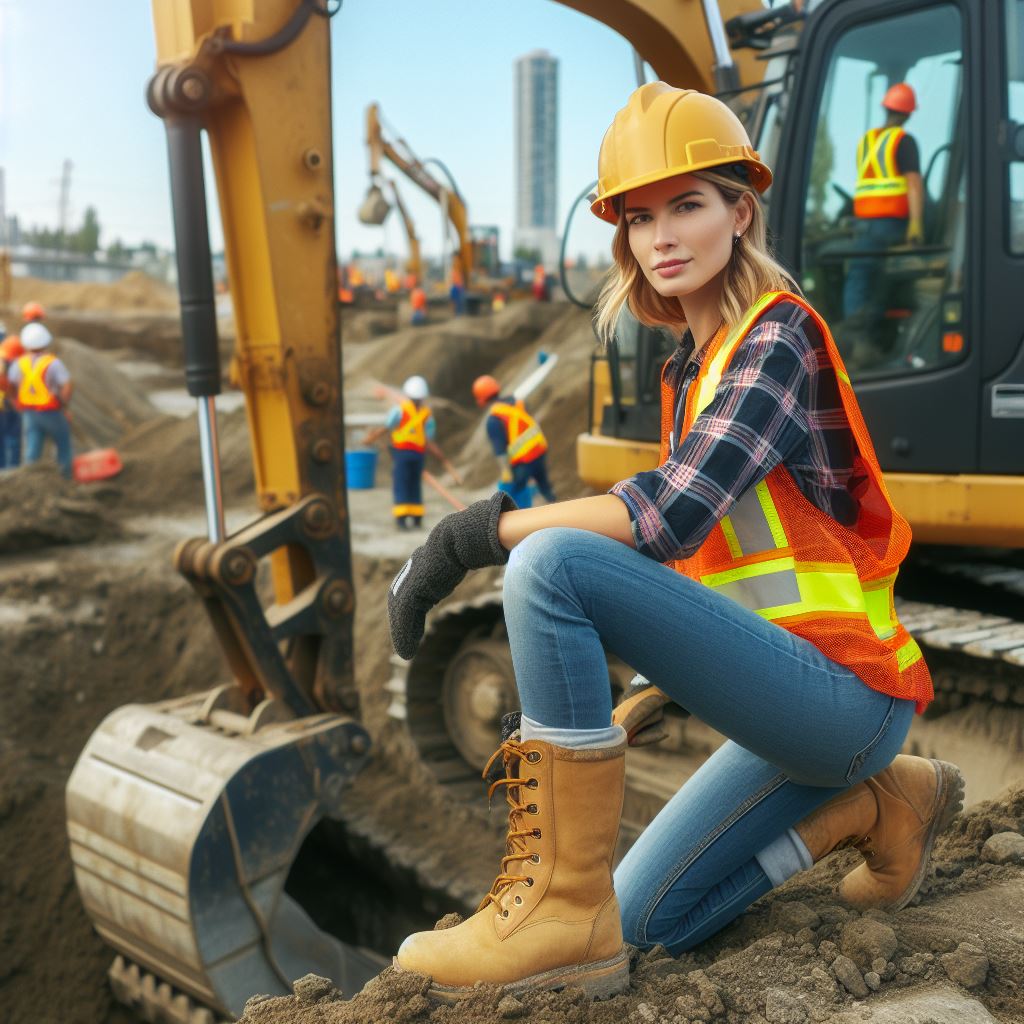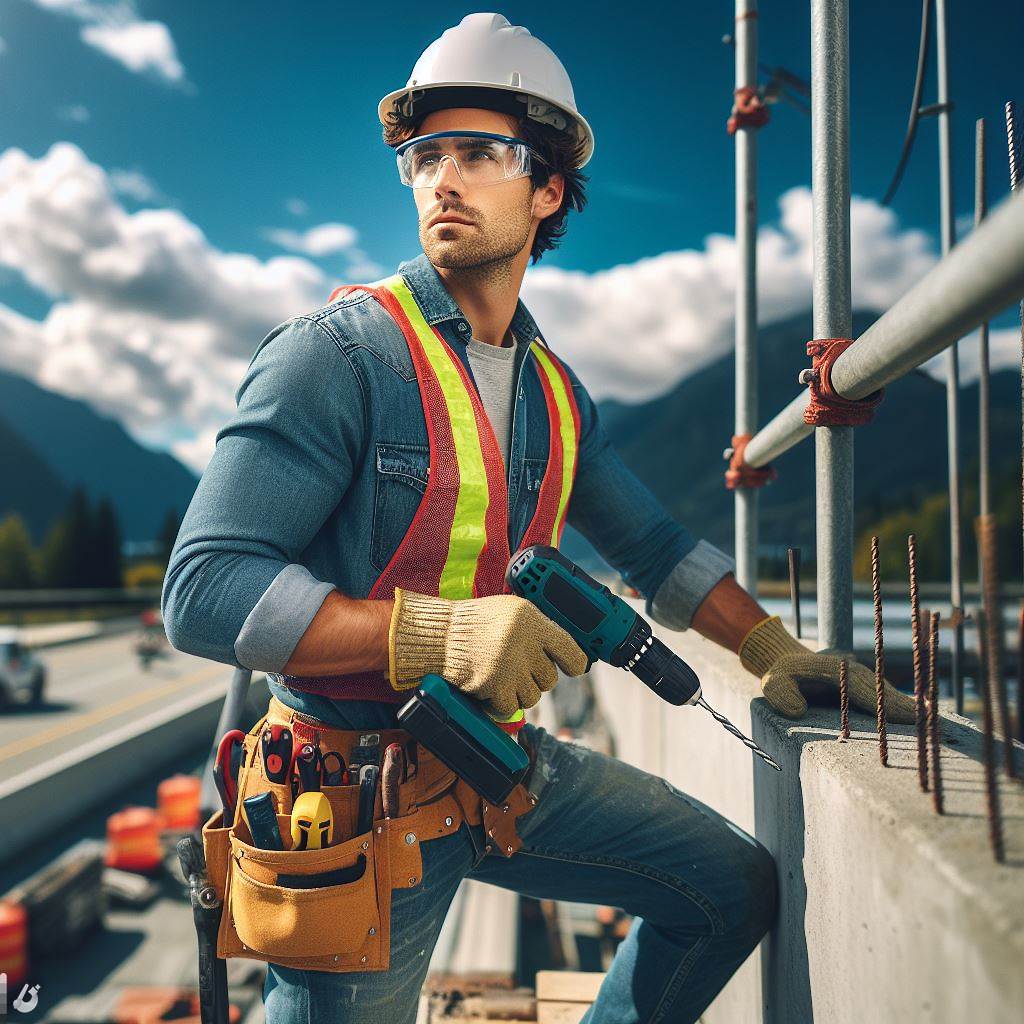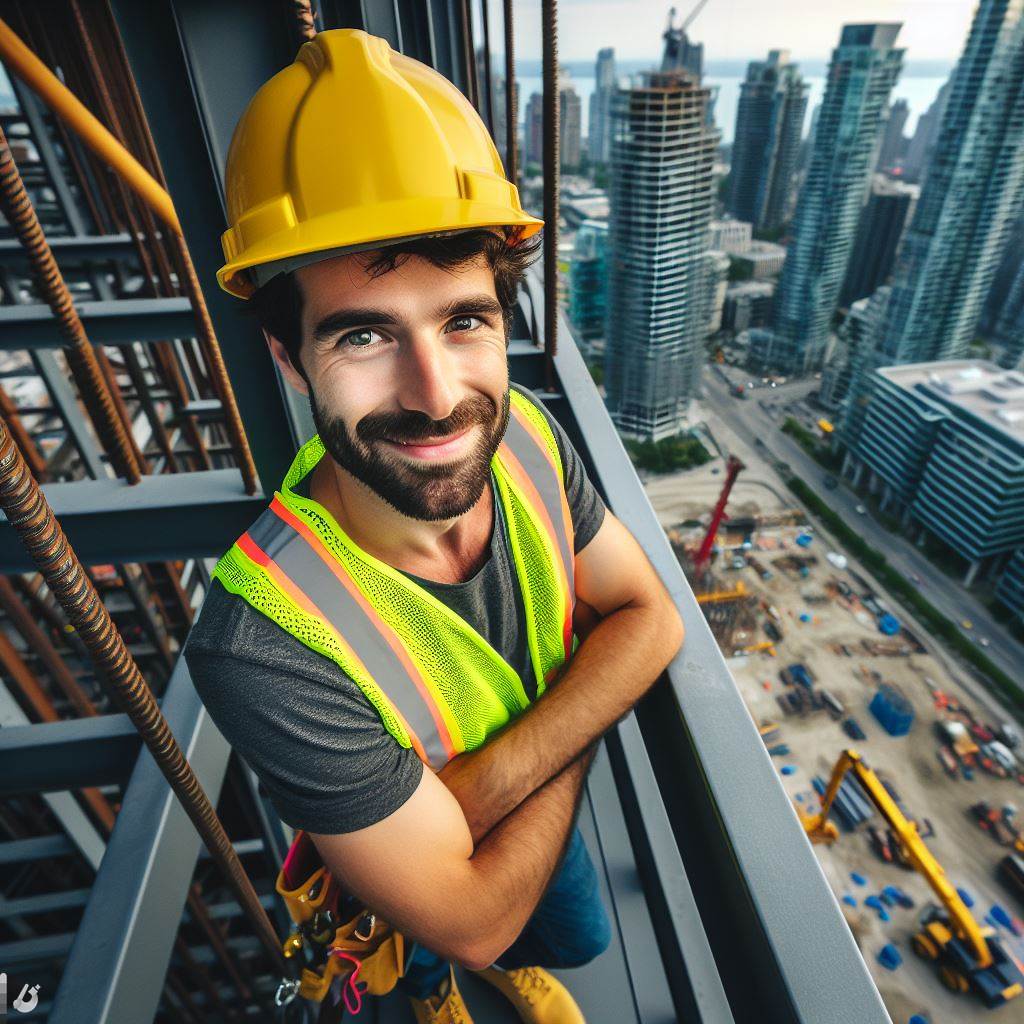Introduction
Construction workers face a wide range of hazards and challenges in their daily work.
Proper footwear is essential to protect workers from these hazards and ensure their safety on the job.
This blog post will provide an overview of the importance of footwear for construction workers, including the hazards and challenges faced in the construction industry.
The purpose of this blog post is to provide useful information about the best footwear options for construction workers.
Construction workers are exposed to a variety of hazards on the job, including falling objects, sharp tools, and slippery surfaces.
They also face challenges such as long hours on their feet, exposure to extreme temperatures, and uneven terrain.
Proper footwear can help protect workers from these hazards and challenges, reducing the risk of injury and improving their overall comfort and well-being.
The best footwear for construction workers should be durable, slip-resistant, and provide ample support for the feet and ankles.
It should also be comfortable to wear for long periods and provide protection against electrical hazards.
This blog post will provide guidance on how to choose the best footwear for construction workers, including tips on selecting the right materials, styles, and features.
By following this guidance, construction workers can ensure that they are wearing the best footwear for their job, reducing the risk of injury and improving their overall safety and comfort on the job.
Safety Considerations for Construction Workers
Importance of safety in the construction industry
- Construction workers face a significant risk of accidents and injuries due to the nature of their work.
- Ensuring safety is crucial to prevent potential hazards and protect workers from harm.
- Employers must prioritize safety by providing appropriate protective equipment, including footwear.
Common types of injuries and accidents related to inappropriate footwear
- Wearing improper footwear can result in various foot and ankle injuries on construction sites.
- Falling objects, sharp objects, and electrical hazards are common causes of workplace accidents.
- Lack of proper footwear increases the risk of slips, trips, and falls, potentially leading to severe injuries.
Regulations and standards for safety footwear in Canada
- Canada has specific regulations and standards in place to ensure the safety of construction workers.
- CSA Group, a Canadian standards organization, sets guidelines for safety footwear in the construction industry.
- Safety footwear should meet CSA standards, including protective toes, electrical shock resistance, and puncture protection.
Examples of safety features in footwear
- Protective Toe Caps: Reinforced toe caps can protect workers’ toes from falling objects and impacts.
- Slip-Resistant Soles: Shoes with slip-resistant soles reduce the risk of accidental falls on slippery surfaces.
- Electrical Hazard Protection: Insulated footwear prevents electrical shocks by insulating the wearer from the ground.
- Puncture Resistance: Construction workers should wear boots with puncture-resistant soles to avoid injuries from sharp objects.
Benefits of using appropriate safety footwear
- Reduces the risk of foot injuries, such as fractures, sprains, and cuts.
- Enhances stability and balance, reducing the likelihood of slips, trips, and falls.
- Protects workers from electrical hazards, chemical spills, and other workplace dangers.
- Boosts productivity and morale by instilling a sense of safety and well-being.
- Helps comply with occupational health and safety regulations and avoid potential penalties.
Tips for selecting the best footwear for construction workers
- Choose footwear that fits well, providing proper support and comfort during long work hours.
- Look for CSA-approved safety shoes or boots that meet industry standards and regulations.
- Consider the specific hazards and risks present in your workplace when selecting footwear.
- Inspect footwear regularly for signs of wear and tear, replacing them when necessary.
- Consult with professionals or safety experts to ensure you make the right footwear choices.
Construction workers face numerous safety risks, making appropriate footwear a crucial aspect of their protective gear.
By adhering to regulations and standards set by organizations like CSA Group, workers can minimize injuries and work confidently.
Prioritizing safety not only protects individuals but also improves overall job performance and well-being.
Selecting the right footwear and regularly maintaining it ensures construction workers can continue their job safely and effectively.
Read: Electrical Safety Standards in Canada Explained
Factors to Consider when Choosing Footwear for Construction Workers
Durability and protection
- Resistance to impact, puncture, and electrical hazards is crucial for construction workers.
- The strength and durability of materials used in the footwear should be taken into account.
- Isolated and non-conductive soles help to prevent electrical accidents at the construction site.
Comfort and fit
- Proper cushioning and support are essential for construction workers who spend long hours on their feet.
- Footwear with proper arch support and stability features helps maintain good posture and reduce fatigue.
- Adjustable closures such as laces or straps ensure a secure and personalized fit for each worker.
Slip-resistance and traction
- Slip-resistant outsoles are of utmost importance to prevent accidents on slippery surfaces.
- Deep treads or lug patterns on the outsoles provide better traction on various surfaces encountered on construction sites.
Construction workers face numerous hazards and challenges in their daily work, making it crucial for them to have appropriate footwear that offers both comfort and protection.
When choosing footwear for construction workers, several factors need to be considered to ensure the best possible choice.
Durability and protection
Durability and protection are vital aspects to prioritize when selecting footwear for construction workers.
The footwear must be resistant to impact, puncture, and electrical hazards to keep workers safe.
Construction sites often involve heavy machinery, falling objects, and potential electrical dangers.
Therefore, the materials used in the footwear should be strong and durable to withstand these risks.
Furthermore, isolated and non-conductive soles are crucial for construction workers who may come into contact with electrical equipment or live wires.
This feature helps prevent electrical accidents and ensures the worker’s safety.
Comfort and fit
Comfort and fit play a significant role in the overall performance and well-being of construction workers.
Unlock Your Career Potential
Visualize a clear path to success with our tailored Career Consulting service. Personalized insights in just 1-3 days.
Get StartedThey often spend long hours on their feet, so the footwear should provide proper cushioning and support.
This helps reduce fatigue and minimize the risk of foot and leg discomfort or injuries.
Proper arch support and stability features are essential to maintain good posture and reduce the strain on the feet and lower back.
Construction workers often have to navigate uneven terrain and climb ladders, so footwear with these features is necessary to prevent accidents and maintain stability.
Adjustable closures, such as laces or straps, are essential for a secure and personalized fit.
Construction workers come in various sizes, so having the ability to adjust the fit ensures maximum comfort and prevents blisters or sore spots.
Slip-resistance and traction
Slip-resistance and traction are critical factors to consider in construction footwear.
Construction sites can have slippery surfaces, especially during inclement weather or when dealing with spills.
Slip-resistant outsoles are designed to provide a firm grip, reducing the risk of slips, trips, and falls.
Additionally, deep treads or lug patterns on the outsoles enhance traction on different surfaces, including wet or muddy areas.
These features improve stability and help workers maintain their footing, especially on challenging terrains or uneven surfaces.
In a nutshell, choosing appropriate footwear for construction workers requires careful consideration of various factors.
Durability, protection, comfort, fit, slip-resistance, and traction are essential aspects to ensure the safety and well-being of workers in a construction environment.
Investing in high-quality construction footwear will not only protect workers but also enhance their productivity and job satisfaction.
Read: Apprenticeships in Electrical Work: A CA Guide

Recommended Footwear for Construction Workers
Steel-toed boots
- Steel-toe protection provides numerous benefits for construction workers.
- Consider popular brands and models like Red Wing, Timberland, and Caterpillar for steel-toed boots.
Composite toe boots
- Composite toe boots offer advantages and differences compared to steel-toed boots.
- Recommended options in the market include KEEN Utility, Wolverine, and Ariat composite toe boots.
Metatarsal guard boots
- Metatarsal protection is crucial for safeguarding the delicate metatarsal bones in the foot.
- Top choices for construction workers looking for metatarsal guard boots are Hytest, John Deere, and Dr. Martens.
Logger boots
- Logger boots feature specific characteristics and offer unique benefits for construction workers.
- They are especially suitable for tasks and environments that involve heavy logging and forestry work.
Read: Canadian Drafting Standards & Regulations
Proper Maintenance and Care for Construction Footwear
Cleaning and storing guidelines
- Regularly clean footwear with mild soap and water to remove dirt and debris.
- Avoid using harsh chemicals or abrasive materials that can damage the footwear.
- Allow the footwear to dry naturally, avoiding direct heat sources like radiators or sunlight.
- Store the footwear in a clean, dry area away from moisture, extreme temperatures, and sunlight.
Inspection of footwear for signs of wear and tear
- Regularly inspect the footwear for any signs of damage or excessive wear.
- Check the soles for uneven wearing, cracks, or separation from the upper part of the footwear.
- Look for any loose stitches, worn-out linings, or damaged toe caps.
- If any major damage or wear is detected, it is advised to replace the footwear.
Replacing worn-out soles or damaged parts
- If the soles are worn-out or damaged, consider replacing them with new ones.
- Ensure the replacement parts are of high quality and compatible with the footwear.
- Consult a professional or refer to the manufacturer’s guidelines for proper replacement procedures.
- For other damaged parts, evaluate if they can be repaired or need replacement.
Tips for prolonging the lifespan of construction footwear
- Rotate between multiple pairs of footwear to allow them to properly dry and rest between uses.
- Apply a waterproofing spray to protect the footwear from moisture and increase durability.
- Avoid exposing the footwear to extreme temperatures or environmental hazards.
- Regularly clean and maintain the footwear as per the cleaning guidelines mentioned above.
- Consider using insoles or inserts to provide additional comfort and support to the feet.
- Properly store the footwear when not in use to prevent unnecessary damage.
- Follow the manufacturer’s instructions for any specific care or maintenance recommendations.
By following these maintenance and care guidelines, construction workers can significantly prolong the lifespan of their footwear, ensuring both safety and comfort in their work environment.
Read: Understanding Electrician Specializations in CA
Conclusion
Appropriate footwear is crucial for construction workers to ensure their safety and comfort on the job.
This blog post has provided an overview of the importance of footwear for construction workers, including the hazards and challenges faced in the construction industry.
It has also provided guidance on how to choose the best footwear for construction workers, including tips on selecting the right materials, styles, and features.
The recommended footwear options for construction workers include durable, slip-resistant, and supportive shoes that provide ample protection for the feet and ankles.
These include Skechers Work® Relaxed Fit® Cessnock SR Shoes, Wolverine Rev Vent UltraSpring™ DuraShocks® CarbonMAX® Shoe, and Suadex Steel Toe Work Shoes for Men.
It is important for construction workers to prioritize safety and comfort in the workplace by wearing appropriate footwear.
By doing so, they can reduce the risk of injury and improve their overall well-being.
Workers should also be aware of the hazards and challenges they face on the job and take steps to mitigate these risks.
This includes following safety protocols, using appropriate equipment, and seeking medical attention when necessary.
By prioritizing safety and comfort in the workplace, construction workers can ensure that they are able to perform their jobs effectively and efficiently, while also protecting their health and well-being.




